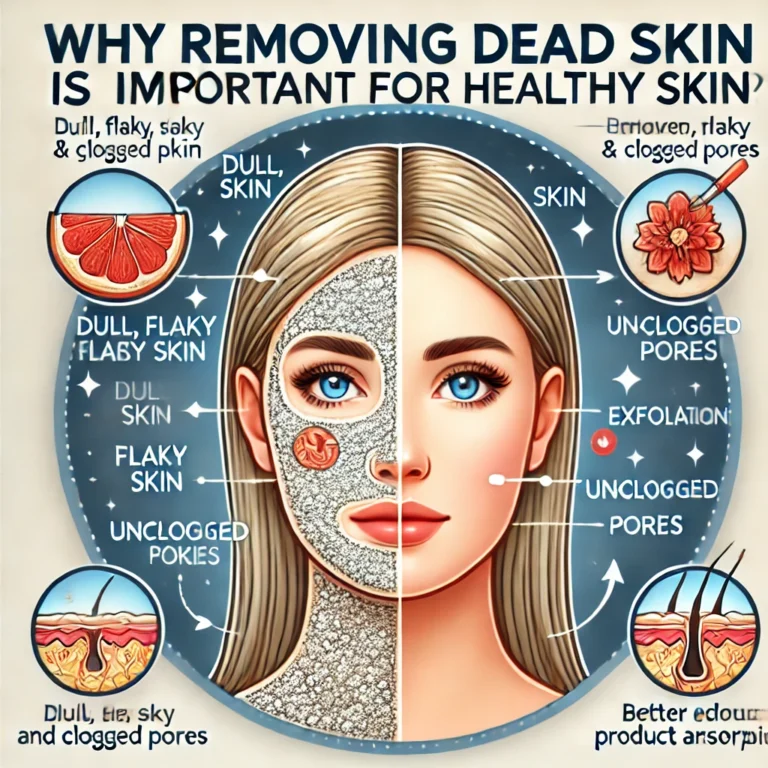
Our skin is constantly renewing itself, shedding dead skin cells to make way for fresh, healthy ones. However, this natural process sometimes needs a boost. Without proper care, these dead cells can build up on the surface, leading to dullness, clogged pores, and an uneven texture. Let’s dive into the importance of removing dead skin and how it contributes to radiant, healthy skin.
Understanding the Layers of Your Skin
The diagram above visually illustrates how exfoliation transforms the skin. On one side, you can see the buildup of dead skin cells causing dullness and clogging pores. On the other side, the benefits of removing those cells are apparent—glowing, smooth, and rejuvenated skin.
Key takeaways from the diagram:
- Dead Skin Build-Up: Excess dead skin forms a barrier, preventing skincare products from penetrating deeply.
- Clogged Pores: This layer can trap dirt and oil, causing acne and blackheads.
- Healthy Renewal: Exfoliating reveals the fresh, younger cells underneath, improving overall skin tone and texture.
Why It’s Important to Remove Dead Skin
- Improved Texture: Exfoliation smooths the skin by removing flaky patches and uneven surfaces.
- Unclogged Pores: Clearing out dead cells prevents breakouts and blackheads.
- Better Product Absorption: Without the barrier of dead cells, moisturizers, serums, and treatments can penetrate deeper into the skin.
- Enhanced Glow: Fresh skin reflects light better, giving you a natural, radiant appearance.
Methods to Remove Dead Skin
1. Physical Exfoliation
Using scrubs, brushes, or sponges to manually slough away dead cells. Be cautious with abrasive tools to avoid irritation.
2. Chemical Exfoliation
Products containing alpha hydroxy acids (AHAs), beta hydroxy acids (BHAs), or enzymes dissolve the bonds holding dead skin cells together. These are ideal for a gentler and more even exfoliation.
3. Professional Treatments
Dermatologist-recommended procedures like microdermabrasion or chemical peels can remove dead skin effectively and address deeper issues.
Who Should Exfoliate and How Often?
Everyone can benefit from exfoliation, but the method and frequency depend on skin type:
- Oily Skin: Exfoliate 2-3 times a week to prevent clogged pores.
- Dry or Sensitive Skin: Once a week with gentle products to avoid irritation.
- Combination Skin: Focus on areas prone to buildup, like the T-zone.
Precautions
- Over-exfoliation can damage your skin barrier, leading to sensitivity and dryness. Always follow up with a hydrating moisturizer.
- Choose products suitable for your skin type to avoid reactions.
Closing Thoughts
Exfoliation is a vital step in any skincare routine, ensuring your skin stays fresh, smooth, and glowing. By understanding how dead skin impacts your complexion and using effective methods to remove it, you can unlock healthier, brighter skin.
Make the transformation today by incorporating exfoliation into your routine! Use the diagram above as a guide to visualize the benefits and importance of this essential skincare step.
Ready to start your exfoliation journey? Visit our in-depth exfoliation guide to discover the best practices and products for your skin type.
- Exfoliating the Right Way: Safe and Effective Skincare
- The Art of Exfoliation: Pros, Cons, and Top Products for Radiant Skin
